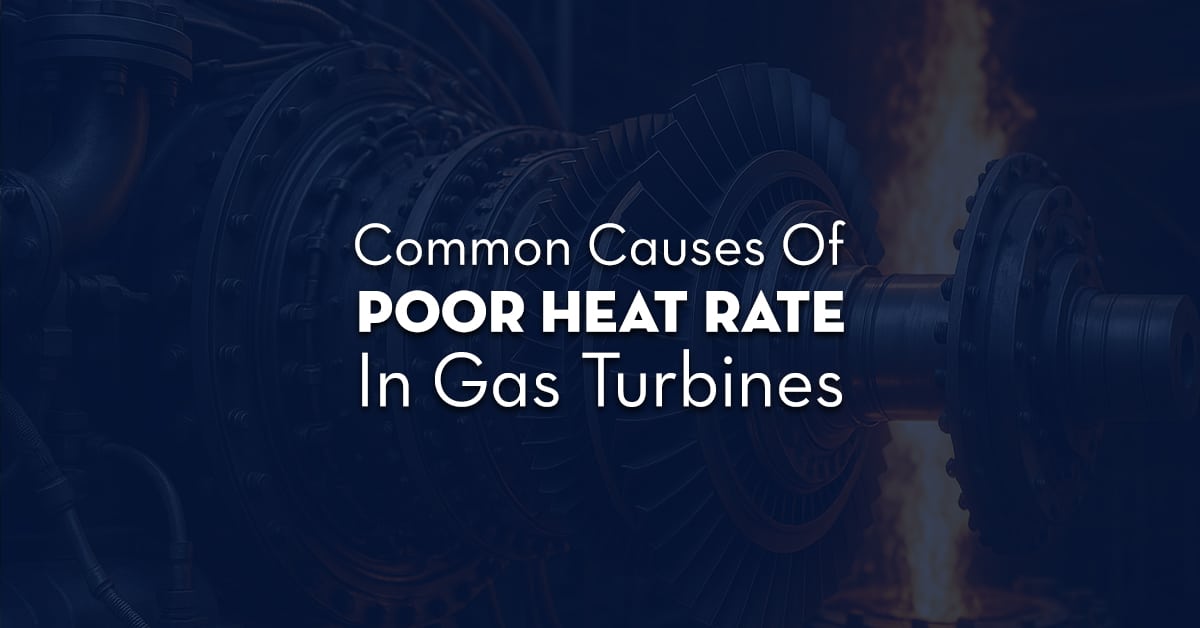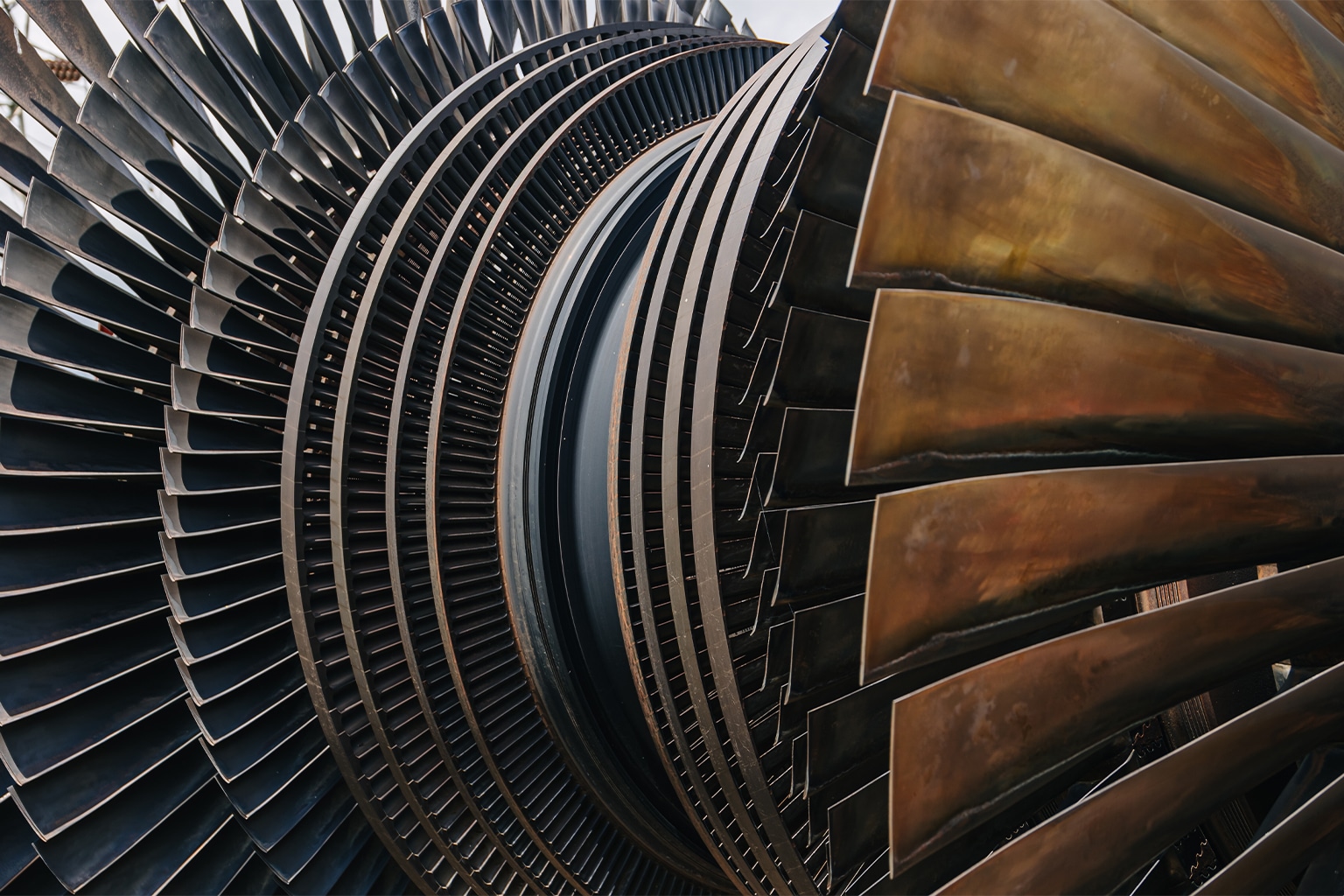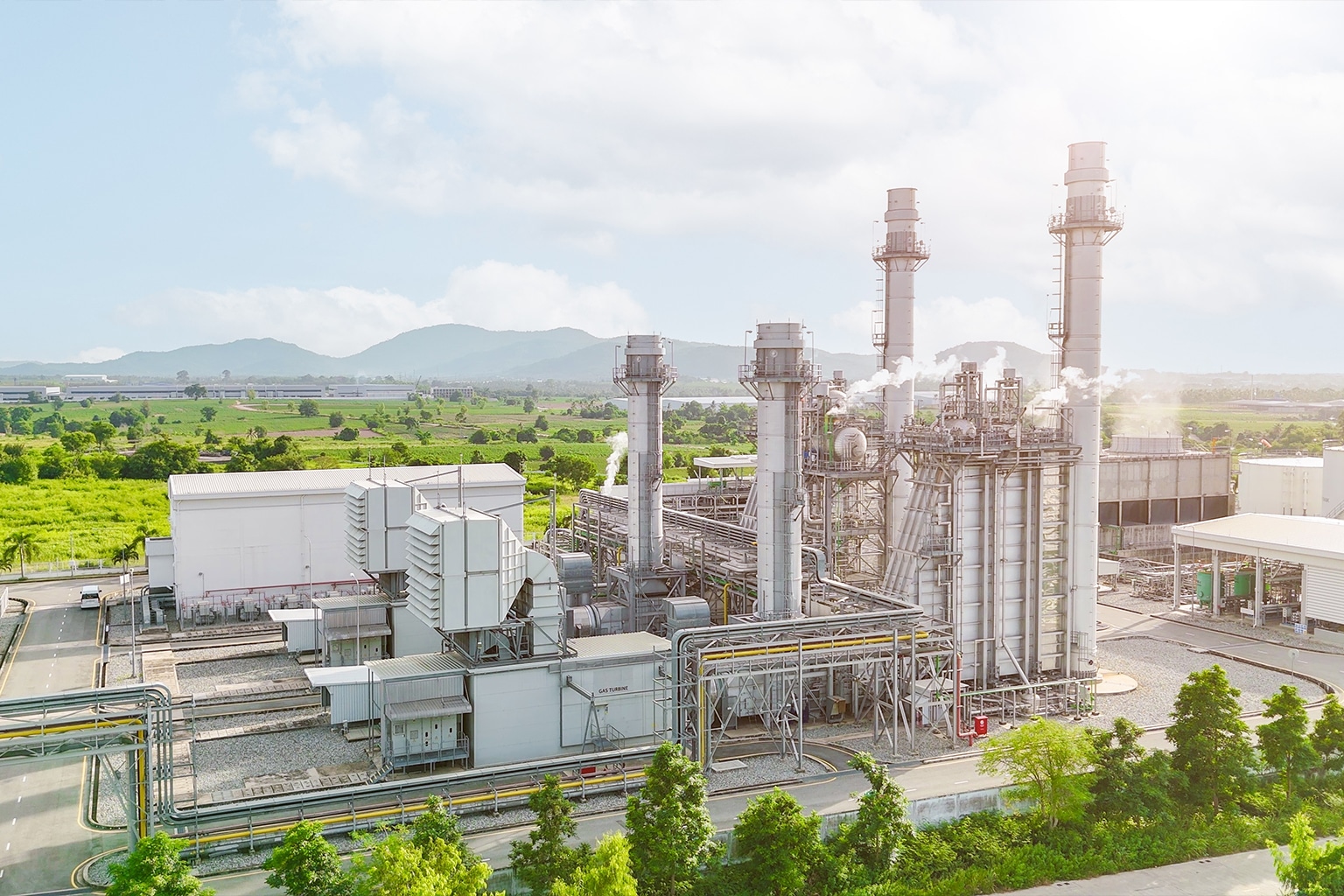
Heat rate is the cornerstone of gas turbine performance, reflecting the efficiency in converting fuel into electrical power. A decline in heat rate significantly increases operational costs and diminishes system efficiency. This metric is vital for any turbine operation.
Operators of industrial gas turbines face intense pressure to enhance performance while managing fuel costs. Identifying the root causes of heat rate decline is critical for sustainable power generation. Factors such as equipment degradation, maintenance problems, and operational issues all play a role in reducing efficiency.
Allied Power Group, based in Houston, Texas, offers extensive experience in addressing heat rate issues in industrial gas turbines. Our methodical approach aids in identifying problems early, preventing costly gas turbine failures. This proactive strategy ensures minimal downtime and maintains reliable turbine performance.
Recognizing the early signs of thermal efficiency decline enables maintenance teams to act swiftly. This proactive approach safeguards your investment and guarantees consistent power output for extended periods.
Key Takeaways
- Heat rate directly impacts fuel costs and overall turbine profitability
- Multiple factors contribute to declining gas turbine engine performance
- Early detection prevents expensive repairs and extended outages
- Professional diagnosis ensures accurate identification of efficiency problems
- Systematic maintenance approaches restore optimal turbine power output
- Regular monitoring helps maintain consistent thermal efficiency levels
Understanding Heat Rate and Its Impact on Gas Turbine Performance
The heat rate of a gas turbine is a critical metric, linking fuel input to electrical output. It reflects the efficiency with which thermal energy is converted into electricity. Recognizing the mechanics of heat rate is essential for identifying performance issues early, ensuring optimal plant efficiency.
Heat rate degradation impacts every aspect of a power generation system. It affects both simple-cycle gas turbines and complex combined cycle plants, leading to reduced profitability. Allied Power Group’s expertise in industrial gas turbine repair offers valuable insights into the economic and operational consequences of heat rate degradation.
What is Heat Rate in Gas Turbines
Heat rate is a measure of the thermal energy needed to produce one kilowatt-hour of electricity. It is expressed in British thermal units per kilowatt-hour (BTU/kWh). A lower heat rate signifies better thermal efficiency and reduced fuel consumption.
The calculation of heat rate involves dividing total fuel energy input by net electric power output. Industrial gas turbines typically have heat rates ranging from 9,000 to 15,000 BTU/kWh. Combined cycle plants achieve lower heat rates by utilizing recovered heat through steam turbines.
Modern gas turbines employ advanced control systems to monitor heat rate continuously. These systems track fuel flow, power output, and ambient conditions. Real-time data enables operators to maintain optimal performance under varying load conditions.
How Poor Heat Rate Affects Power Generation Efficiency
Degraded heat rate has cascading effects on the entire power generation system. Higher fuel consumption reduces plant efficiency and increases operational costs. These effects are more pronounced in combined cycle power plants.
Poor heat rate impacts steam production in heat recovery steam generators. Reduced steam quality decreases steam turbine performance. This dual impact significantly reduces overall cycle efficiency in combined cycle plants.
Turbine components suffer additional stress at degraded heat rates. Higher operating temperatures accelerate wear patterns. Increased maintenance requirements further reduce plant availability and profitability.
| Heat Rate Condition | Fuel Consumption Impact | Power Output Loss | Annual Cost Increase |
|---|---|---|---|
| Optimal Performance | Baseline | 0% | $0 |
| 5% Degradation | +5.3% | -2.1% | $750,000 |
| 10% Degradation | +11.1% | -4.5% | $1,650,000 |
| 15% Degradation | +17.6% | -7.2% | $2,800,000 |
Economic Impact of Degraded Heat Rate on Power Plants
Heat rate degradation directly impacts fuel cost economics in power generation facilities. A 1% increase in heat rate typically raises fuel costs by 1% for the same power output. Large industrial facilities can face millions in additional annual expenses.
Revenue losses compound the fuel cost increases in degraded heat rate scenarios. Reduced power output means less electricity available for sale. Market competition intensifies pressure on plants with poor thermal efficiency.
Efficiency improvement projects become economically attractive when heat rate degrades significantly. Upgrading turbine components or implementing advanced control systems can restore performance. The payback period for these investments often ranges from 2-4 years.
Long-term economic impacts extend beyond immediate fuel and revenue concerns. Plants with consistently poor heat rates face reduced asset values. Regulatory compliance becomes more challenging as emissions per MW increase with degraded efficiency.
Simple-cycle gas turbines experience more dramatic economic impacts from heat rate degradation. Without steam cycle heat recovery, these units cannot compensate for thermal losses. Combined cycle plants have some buffer through their steam turbine systems.
Mechanical and Component-Related Causes of Poor Heat Rate in Gas Turbines
Gas turbine performance heavily depends on the integrity of critical mechanical components. These components are designed to operate under extreme conditions. When they deteriorate or fail, they significantly degrade heat rate. Understanding these mechanical issues is key for power plant operators to identify problems early and implement effective solutions.
The relationship between mechanical health and thermal efficiency is complex. Even minor component degradation can substantially reduce efficiency. Allied Power Group’s specialized knowledge in industrial gas turbine repair enables precise identification and resolution of mechanical issues that contribute to heat rate degradation.
Compressor Fouling and Degradation
Compressor fouling is a common mechanical cause of poor heat rate in gas turbines. Contaminants in inlet air accumulate on compressor blades and internal surfaces. This buildup disrupts airflow patterns, affecting turbine compressor performance.
When fouling occurs, air mass flow through the compressor decreases. The contaminated surfaces create additional resistance. This forces the compressor to work harder, raising operating temperatures throughout the system.
Poor inlet air quality accelerates fouling rates. Particles, oils, and contaminants coat blade surfaces, reducing compressor efficiency. These substances disrupt flow and pressure ratios.
The economic impact of compressor fouling extends beyond immediate efficiency losses. Fouled compressors require more frequent cleaning cycles, leading to increased downtime. Regular maintenance is essential to prevent severe fouling that can permanently damage compressor components.
Turbine Blade and Hot Gas Path Component Deterioration
Turbine blade deterioration occurs naturally due to extreme pressure and temperature conditions. High-temperature combustion gases erode blade materials. This erosion changes the blade’s aerodynamic profile and reduces its effectiveness.
Corrosion affects turbine blades through multiple mechanisms. Hot combustion gases contain corrosive elements that attack blade surfaces over time. Salt deposits from coastal environments can accelerate this corrosion process. The cooling system designed to protect blades may become less effective as corrosion progresses.
Thermal barrier coatings on turbine blades provide critical protection against extreme heat. When these coatings degrade, the underlying blade material faces direct exposure to combustion temperatures. This exposure leads to rapid deterioration that significantly impacts turbine performance.
Hot gas path components beyond the turbine blade also contribute to heat rate problems. Combustion chamber liners, transition pieces, and turbine exhaust components face similar thermal stresses. Deterioration in any of these areas disrupts the carefully engineered flow patterns through the turbine section.
Bearing and Mechanical System Failures
Turbine bearings support the rotating assembly and maintain precise alignment between components. When bearing degradation occurs, it creates vibrations that affect the entire mechanical system. These vibrations can damage other components like bearings and seals throughout the turbine.
Bearing failures often result from inadequate lubrication or contamination in the oil system. High operating temperatures can break down lubricants faster than expected. Contaminated oil carries particles that act as abrasives, wearing bearing surfaces prematurely.
Seal failures in the turbine create multiple problems that reduce efficiency. Damaged seals allow hot gases to leak into areas where they don’t belong. This leakage reduces the pressure differential that drives the turbine and wastes energy that should contribute to power generation.
Mechanical system failures create cascading effects throughout the turbine. A single bearing problem can lead to shaft misalignment, which then affects compressor and turbine blade clearances. These clearance changes alter flow patterns and reduce overall system efficiency.
Preventive turbine maintenance programs focus heavily on monitoring bearing condition and mechanical system health. Early detection of bearing wear allows for planned maintenance that prevents catastrophic failures. Components like bearings require regular inspection and replacement according to manufacturer specifications.
Operational and Environmental Factors Affecting Turbine Heat Rate
External factors significantly influence gas turbine efficiency, beyond mechanical components. Plant operators must grasp these variables to ensure optimal turbine performance. This understanding is key to achieving consistent heat rate improvement. Environmental conditions, fuel characteristics, and operational strategies collectively determine efficiency.
Allied Power Group’s approach to industrial gas turbine repair encompasses these external factors. These influences often pose the most significant challenges for maintaining consistent power generation efficiency.
Ambient Conditions and Inlet Air Temperature Effects
Ambient conditions directly affect gas turbine efficiency by altering air density and mass flow rates. Higher temperatures decrease air density, leading to lower power output and increased heat rates.
Turbine inlet air cooling systems are effective in hot climates for heat rate improvement. These systems cool incoming air, increasing its density and improving combustion efficiency. This results in better fuel economy and enhanced generator output.
Humidity levels also impact turbine performance by changing the specific heat of the air-fuel mixture. High humidity can reduce flame temperatures and alter combustion characteristics. Plant operators must account for these variations when monitoring performance and adjusting operational parameters.
Altitude presents another challenge, as reduced atmospheric pressure decreases air density. Turbines operate less efficiently at higher elevations, requiring careful consideration during installation and operation planning.
Fuel Quality and Combustion System Performance
Fuel gas composition significantly affects combustion efficiency and emission levels. Variations in heating value, hydrogen content, and contaminant levels can alter flame characteristics and exhaust temperatures. Poor fuel quality often leads to incomplete combustion and reduced thermal efficiency.
Contaminants in fuel gas can cause fouling of combustion system components. These deposits reduce heat transfer efficiency and may lead to premature failure of critical parts. Regular fuel analysis helps identify issues before they impact performance.
The combustion system must maintain proper air-to-fuel ratios across varying fuel compositions. Advanced control systems adjust these ratios automatically, but operators need thorough failure analysis capabilities to identify when adjustments fall outside acceptable ranges.
Fuel temperature affects injection characteristics and mixing patterns within the combustor. Consistent fuel conditioning helps maintain stable combustion and prevents hot spots that can damage turbine components.
Part Load Operations and Cycling Effects
Operating at part load conditions typically results in higher heat rates compared to base load operation. Gas turbines achieve peak efficiency at their design point, and deviations from this optimal operating range reduce overall performance. The relationship between load and efficiency follows predictable patterns that operators can use for optimization.
Frequent cycling between different load levels creates additional stress on turbine components. Temperature and pressure fluctuations during startup and shutdown cycles can accelerate component degradation. This cycling effect impacts turbine life and long-term reliability.
Part load operations often require different combustion strategies to maintain acceptable emission levels. Lower firing temperatures may improve component longevity but can increase carbon monoxide and unburned hydrocarbon emissions. Balancing these competing requirements requires careful operation and maintenance planning.
Monitoring performance during various load conditions helps identify trends that indicate developing problems. Early detection allows for proactive maintenance scheduling and prevents unexpected failures that could significantly impact heat rate and availability.
| Operating Condition | Heat Rate Impact | Primary Causes | Mitigation Strategies |
|---|---|---|---|
| High Ambient Temperature | 5-15% increase | Reduced air density, lower mass flow | Turbine inlet air cooling, operational adjustments |
| Poor Fuel Quality | 3-8% increase | Incomplete combustion, fouling | Fuel conditioning, regular analysis |
| Part Load Operation | 10-25% increase | Off-design point operation | Load optimization, cycling management |
| High Humidity | 2-5% increase | Altered combustion characteristics | Control system adjustments, monitoring |
Effective management of operational and environmental factors requires continuous attention to changing conditions. Plant operators who understand these relationships can optimize turbine performance and lower heat rate through proactive adjustments and maintenance practices.
Conclusion
Effective gas turbine operation necessitates a systematic approach to address the multiple factors influencing heat rate performance. The interconnected nature of mechanical wear, environmental conditions, and operational practices demands continuous monitoring performance. This is to identify degradation before it impacts system efficiency.
Successful heat rate improvement strategies combine proactive turbine maintenance with real-time performance tracking. Regular compressor cleaning, hot gas path inspections, and fuel system optimization work together to maintain optimal turbine operation. These practices help facilities achieve reliable and efficient power generation. They also maximize steam production and exhaust heat recovery.
The complexity of modern gas turbines requires specialized expertise to diagnose and resolve performance issues effectively. Allied Power Group’s extensive experience in industrial gas turbine repair positions the company as a trusted partner for addressing heat rate challenges. Their operation and maintenance solutions help power plants improve heat rate through targeted interventions and preventive strategies.
Achieving optimal performance demands a holistic view of turbine systems. By addressing mechanical degradation, optimizing operating parameters, and implementing robust maintenance protocols, facilities can maintain peak performance and efficiency throughout their equipment’s operational life. This integrated approach ensures sustainable power generation while minimizing operational costs and environmental impact.
FAQ
What is heat rate in gas turbines and why is it important?
Heat rate is a critical metric, measuring the BTU energy needed to produce one kilowatt-hour of electricity. It reflects the thermal efficiency of gas turbine power plants. Lower heat rates signify better efficiency. This metric is vital as it directly influences fuel consumption, operating costs, and overall plant efficiency.

